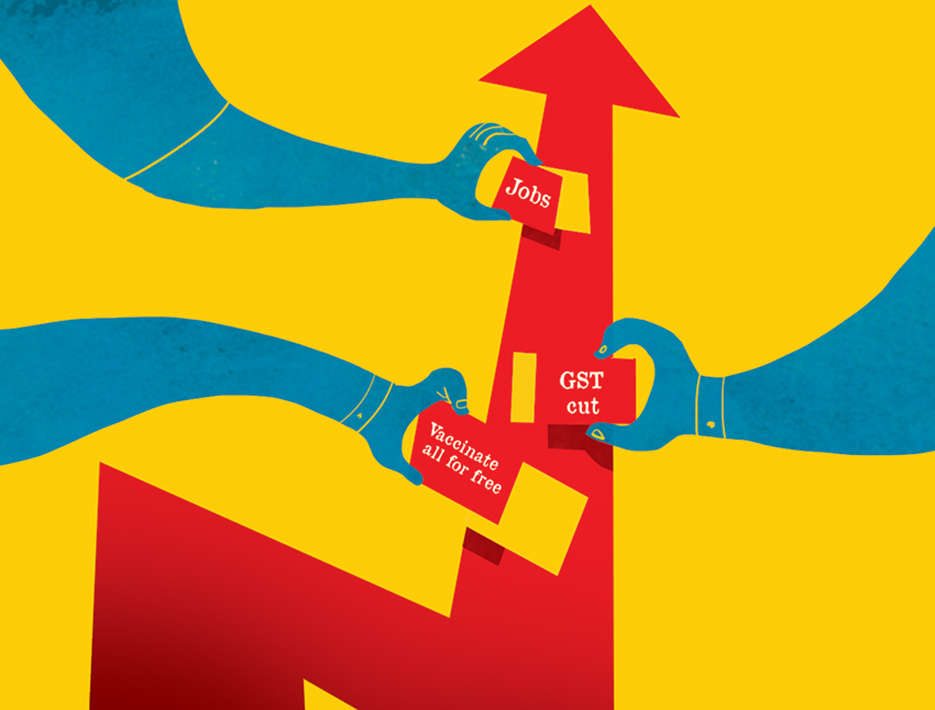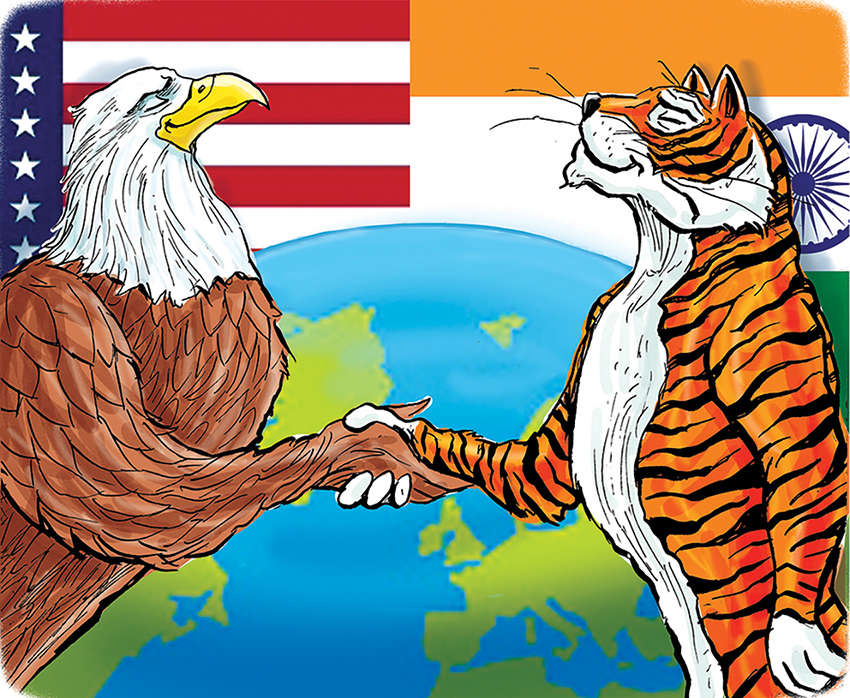How to help the economy: Vaccinate all for free, jobs programme for urban poor, GST cut for consumer durables

The Indian economy, having barely started showing some signs of flickering life, is bracing itself for another round of negative shocks. The marginally positive news of 1.6% GDP growth in the March quarter over the same period last year has already been superseded by the second Covid wave.
Economic costs of the second wave are showing in various indices. According to CMIE, the unemployment rate in May rose by almost 3 percentage points to 11.9%. RBI’s consumer future expectations index has declined by 11% since March. JP Morgan’s composite index in April and May has declined by 15% relative to the March quarter. People are losing jobs, people are afraid about the present and the future, and it is showing in leading indicators of the economy.
While there is conjecture about the extent of actual infections and deaths due to the second wave, the debate centres on whether the actual numbers are 10 times or 25 times the official numbers.
Infirmity and death extracts both tangible and intangible economic costs. Dealing with lost incomes as well as treatment severely dents budgets of families that suffer infections. In addition, families that have lost their main breadwinner are likely to be staring at economic ruin. Economic planning by most households under such conditions is geared towards survival, safety and precaution. In this backdrop of uncertainty and fear, it would be folly for policymakers to expect a return to pre-pandemic demand in the economy even when conditions become relatively benign.
Building confidence in the state of public health is absolutely key for any meaningful recovery. Richer Indian households and the vast majority of middle- and lower-income households are symbiotically linked through the discretionary spending of richer households on travel, restaurants and in-person retail commerce industries. In the absence of confidence in public health, this spending remains muted which reduces incomes and employment of the relatively lower income households working in these sectors that rely on in-person service.
The typical policy response to such conditions is a fiscal boost to the economy in the form of increased government spending targeted towards households, incentives directed towards firms, and increased public health expenditures in order to both control the pandemic as well as build general confidence in the state of public health. This has been the path taken by a number of developed economies over the past year.
The ability to pursue an expansionary fiscal policy, however, is constrained by the availability of fiscal space. Governments that have low deficits for long periods have low public debt. This gives them room to expand deficits during stressed times without generating market concerns about the ability of the government to service their debt.
Unfortunately, sustained fiscal profligacy in India for many years now has shrunk the available fiscal space. The public debt is around 90% of GDP while the consolidated public sector fiscal deficit reached 12.1% in 2020-21. Recognising this fiscal straitjacket, the deficit in 2021-22 is budgeted to contract by 1.5 percentage points.
A second constraint on fiscal expansions is the state of inflation. Fiscal spending in an environment of rising inflation is like sprinkling gasoline on fire. Here, the Indian economy has been emitting mixed signals. While wholesale price inflation spiked to 10.5% in April, consumer price index inflation has remained more controlled, albeit with some recent sequential increases.
So, is there a case for a fiscal expansion? Despite the caveats due to India’s adverse fiscal pre-conditions, it is the best hope for a soft-landing of the economy. Absent a fiscal cushion, we may be staring at an extended economic slowdown. The government would be well-advised to revise the budget in light of the updated conditions and plan on a major fiscal injection into the economy.
What should the additional spending be directed towards? Three areas need infusion of funds. The first is centrally funded vaccination for all eligible Indians. Thankfully, the government has finally returned to central procurement of vaccines and zero-cost distribution of vaccines. Even at $10 a dose, vaccinating all Indians with two doses will cost 0.8% of GDP. Epidemics have a public health externality. Universal free vaccination for all is the best approach to stopping the pandemic, which will also rebuild consumer confidence.
The second area that needs urgent attention is urban unemployment, which has risen to 15%. The urban poor are particularly vulnerable since they have neither a wealth cushion nor access to any state-funded social insurance scheme. Introducing a MGNREGA for urban workers would go a long way towards insulating them. Hundred days work at Rs 300 per day for 15% of the urban labour force is another 0.7% of GDP. These two measures would add 1.5 percentage points to the fiscal deficit. But it would be money well spent.
A third possibility is to temporarily lower the CGST rate on consumer durables for FY 2021-22. Even a 3-percentage point reduction in the average GST rate would raise the deficit by 0.8% of GDP. The temporary nature of it will provide an incentive for households to front-load their purchases. This might jump start some segments of demand.
The other policy lever for macroeconomic management is monetary policy. The main monetary policy tool is interest rates. That has proved ineffective. Lower lending rates induced by negative real policy rates have coincided with declining credit growth. One cannot make people borrow if they see no future prospects from those funds.
It would also be a mistake for RBI to find more ingenious ways of printing money to transfer to the government to fund this spending. RBI would do well to try to preserve what is left of its tattered reputation of independence by asking the government to start bearing the burden of resuscitating the Indian economy.
Disclaimer
Views expressed above are the author’s own.
END OF ARTICLE







